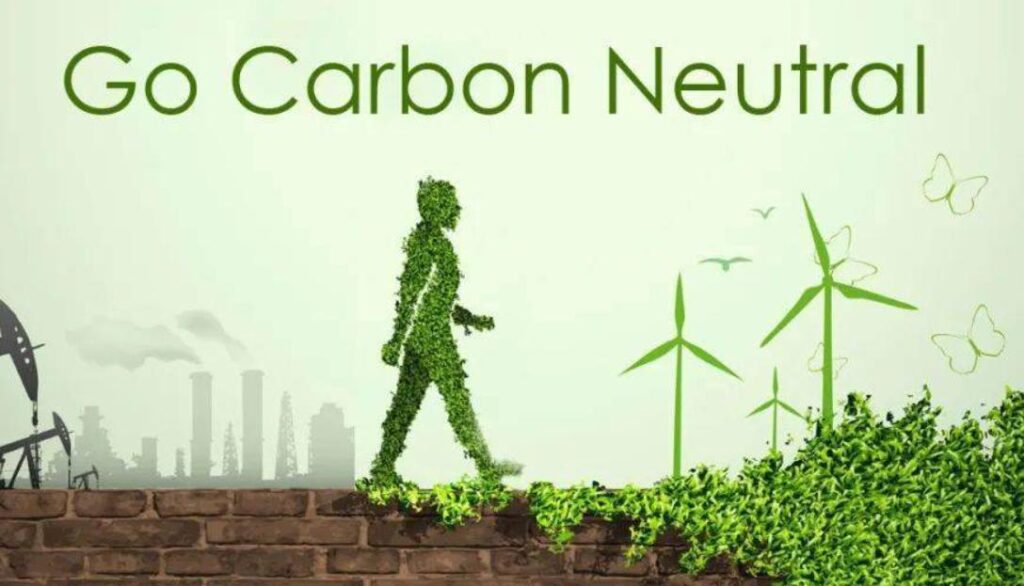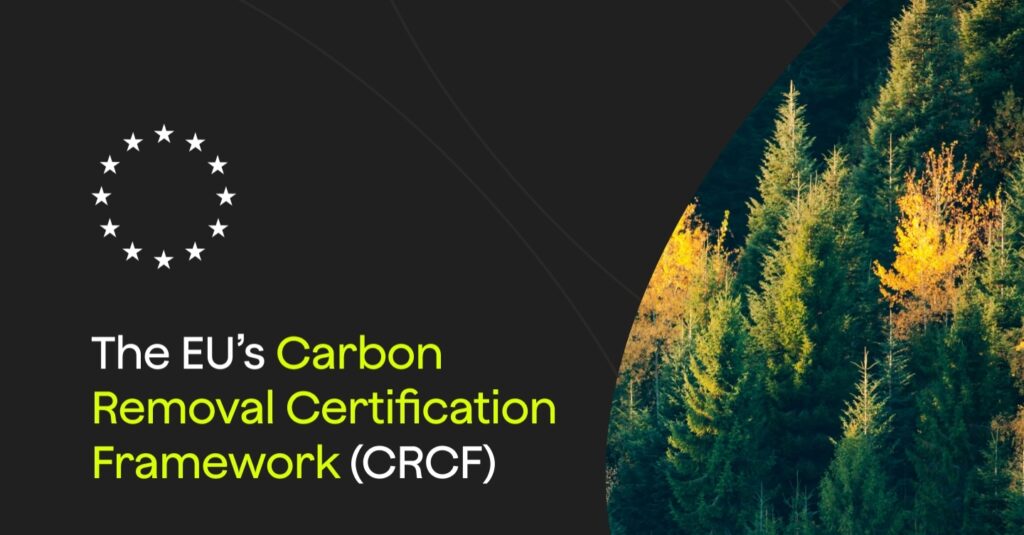Introduction
The EU has adopted Regulation No. 2024/3012 to establish a unified Carbon Removal Certification Framework (CRCF). This framework aims to measure, monitor, and verify carbon removal activities, thereby promoting permanent carbon removal, carbon farming, and carbon storage in products. It complements emission reduction efforts across all EU industries and reduces the risk of greenwashing. The European Parliament emphasizes that robust, reliable, and transparent carbon removal certification can foster the development of the Voluntary Carbon Market, help the EU achieve climate neutrality by 2050, and establish the EU as a global leader in carbon removal.
引言
欧盟采纳了第2024/3012号法规,以建立统一的碳移除认证框架(CRCF)。该框架旨在测量、监测和验证碳移除活动,从而促进产品中的永久碳移除、碳农业和碳储存。它补充了欧盟所有行业的减排努力,并降低了绿色洗钱的风险。欧洲议会强调,健全、可靠和透明的碳移除认证可以促进自愿碳市场的发展,帮助欧盟到2050年实现气候中和,并确立欧盟在全球碳移除领域的领导地位。
Backgrounds of CRCF
On November 30, 2022, the Commission proposed a regulation to create a voluntary EU-wide framework (CRCF) as a first step toward integrating carbon removal plans into EU climate policy. The Council adopted the negotiating mandate on November 17, 2023, and the European Parliament reached a position on November 21, 2023. Following three rounds of negotiations, the EU co-legislators agreed on the regulation on February 20, 2024, which was formally approved on November 19. The CRCF will serve as the official standard for carbon removal credits across all EU member states, emphasizing the regional and independent nature of carbon removal projects.
CRCF的背景
2022年11月30日,委员会提出了一项法规,旨在创建一个自愿性的全欧盟框架(CRCF),作为将碳移除计划整合到欧盟气候政策中的第一步。理事会于2023年11月17日通过了谈判授权,欧洲议会于2023年11月21日达成了立场。经过三轮谈判,欧盟共同立法者于2024年2月20日就法规达成一致,并于11月19日正式批准。CRCF将作为所有欧盟成员国碳移除信用的官方标准,强调碳移除项目的区域性和独立性。
- Coverage Scope
– Permanent Carbon Removal: Capturing and storing atmospheric carbon dioxide or biocarbon for centuries (e.g., bioenergy with carbon capture and storage, direct air capture and storage).
– Carbon Storage Activities: Capturing carbon and storing it in durable products for at least 35 years (e.g., wooden buildings and products).
– Carbon Farming Activities: Enhancing carbon sequestration and storage in forests and soils or reducing greenhouse gas emissions from soils for at least five years (e.g., reforestation, restoration of peatlands or wetlands, improved fertilizer use).
- Certification Standards
– Quantification: Activities must accurately quantify carbon removal and soil emission reduction benefits through scientific methods, transparent data, and precise measurement, reporting, and verification (MRV).
– Additionality: Certified activities must provide additional environmental benefits beyond conventional practices, demonstrating genuine added value.
– Long-term: Certified activities must ensure sustained climate benefits, including long-term carbon storage and adaptability to climate change.
– Sustainability: Activities must avoid significant environmental damage and contribute to sustainable development goals, ensuring positive impacts on biodiversity, water management, soil health, and local communities.
关键内容
• 覆盖范围
– 永久性碳移除:捕获并储存大气中的二氧化碳或生物质碳数百年(例如,带有碳捕获和储存的生物能源,直接空气捕获和储存)。
– 碳储存活动:捕获碳并将其储存在至少35年的耐用产品中(例如,木制建筑和产品)。
– 碳农业活动:增强森林和土壤中的碳固存和储存,或至少五年减少土壤中的温室气体排放(例如,重新造林,泥炭地或湿地的恢复,改进肥料使用)。
• 认证标准
– 量化:活动必须通过科学方法、透明数据以及精确的测量、报告和验证(MRV)准确量化碳移除和土壤排放减少的效益。
– 额外性:认证的活动必须提供超出常规实践的额外环境效益,展示真正的附加价值。
– 长期性:认证的活动必须确保持续的气候效益,包括长期的碳储存和适应气候变化的能力。
– 可持续性:活动必须避免重大环境损害,并有助于可持续发展目标,确保对生物多样性、水资源管理、土壤健康和当地社区产生积极影响。
Certification Program
Operators must develop certification programs to demonstrate compliance with regulations. These programs will adhere to stringent monitoring, verification, and reporting rules, ensuring trust and environmental integrity while addressing risks of carbon release back into the atmosphere.
认证计划
运营商必须开发认证计划以证明符合法规要求。这些计划将遵循严格的监控、验证和报告规则,确保信任和环境完整性,同时解决碳排放回大气的风险。

- EU Climate Policy
Future policies related to Carbon Dioxide Removal (CDR) will be linked to CRCF for quality assurance. This includes directives such as the Green Claims Directive (GCD) and the Industrial Carbon Management Strategy (ICMS). The inclusion of CDR in the EU Emissions Trading Scheme (ETS) is expected to be tied to CRCF standards.
- National Climate Policy
EU member states will utilize CRCF in domestic policies to meet net-zero targets, employing tools such as public procurement and contracts for difference.
- Voluntary Carbon Markets (VCM)
CRCF is expected to have an immediate impact on the VCM, aligning buyer behavior with compliance and best practices. The VCM market is projected to reach $200 billion globally by 2050, growing at a rapid rate.
作用
• 欧盟气候政策
与二氧化碳去除(CDR)相关的未来政策将与碳去除认证框架(CRCF)联系起来,以确保质量。这包括诸如绿色声明指令(GCD)和工业碳管理战略(ICMS)等指令。预计将CDR纳入欧盟排放交易计划(ETS)将与CRCF标准挂钩。
• 国家气候政策
欧盟成员国将在国内政策中利用CRCF来实现净零目标,采用公共采购和差价合同等工具。
• 自愿碳市场(VCM)
预计CRCF将立即对VCM产生影响,使买家行为与合规和最佳实践保持一致。预计到2050年,VCM市场将在全球范围内达到2000亿美元,增长速度迅猛。
Impacts on Companies and Industries
The CRCF creates both opportunities and challenges for businesses across various sectors. For carbon removal industries, it establishes a clear framework that enhances credibility and trust, facilitating greater participation in the voluntary carbon markets. The projected alignment with emissions trading schemes (ETS) also paves the way for new revenue streams for companies innovating in carbon capture and storage technologies.
In the agriculture sector, CRCF incentivizes sustainable practices such as carbon farming and soil management, which could redefine traditional methods and create competitive advantages for early adopters. Meanwhile, construction companies may benefit from the focus on durable carbon storage in materials, fostering innovation in green building technologies. However, meeting stringent certification standards will demand significant investments in R&D, technology, and monitoring systems, presenting challenges for smaller enterprises and those lacking technical expertise.
对公司和行业的影响
碳去除信用基金(CRCF)为各行各业的企业创造了机遇和挑战。对于碳去除行业来说,它建立了一个明确的框架,增强了信誉和信任,促进了更大范围的参与自愿碳市场。预计与排放交易计划(ETS)的对接也为在碳捕获和储存技术方面创新的公司铺平了新收入来源的道路。
在农业领域,CRCF激励可持续实践,如碳农业和土壤管理,这可能重新定义传统方法,并为早期采用者创造竞争优势。与此同时,建筑公司可能会从对材料中持久碳储存的关注中受益,促进绿色建筑技术的创新。然而,满足严格的认证标准将需要在研发、技术和监控系统上进行重大投资,这对于小型企业和缺乏技术专长的公司来说是一个挑战。
The CRCF represents a significant development in the EU’s approach to climate action, particularly in the agriculture and carbon-intensive industries. While its focus on carbon offsetting raises concerns about systemic change, it provides an unprecedented opportunity to scale sustainable practices and technologies.
As CRCF takes root, CNEUCN is poised to play a pivotal role. By leveraging its expertise and network, CNEUCN will support companies in aligning their operations with CRCF standards, from providing advisory services on certification processes to facilitating international partnerships.
Additionally, CNEUCN will act as a bridge between the EU and China, fostering collaboration on carbon-neutral initiatives, sharing best practices, and driving innovation across key sectors. With these efforts, CNEUCN aims to contribute meaningfully to global climate governance and the shared goal of a sustainable future.
结论
碳减排共同融资机制(CRCF)代表了欧盟在应对气候变化行动方面的一个重要发展,特别是在农业和碳密集型产业。尽管其对碳抵消的关注引发了对系统性变革的担忧,但它为扩大可持续实践和技术提供了前所未有的机会。
随着CRCF的扎根,仲欧脱碳科技(CNEUCN)准备发挥关键作用。通过利用其专业知识和网络,CNEUCN将支持公司将其运营与CRCF标准对齐,从提供认证流程的咨询服务到促进国际合作伙伴关系。
此外,CNEUCN将作为欧盟和中国之间的桥梁,促进碳中和倡议的合作,分享最佳实践,并推动关键领域的创新。通过这些努力,CNEUCN旨在为全球气候治理和可持续未来的共同目标做出有意义的贡献。
Cover photo
